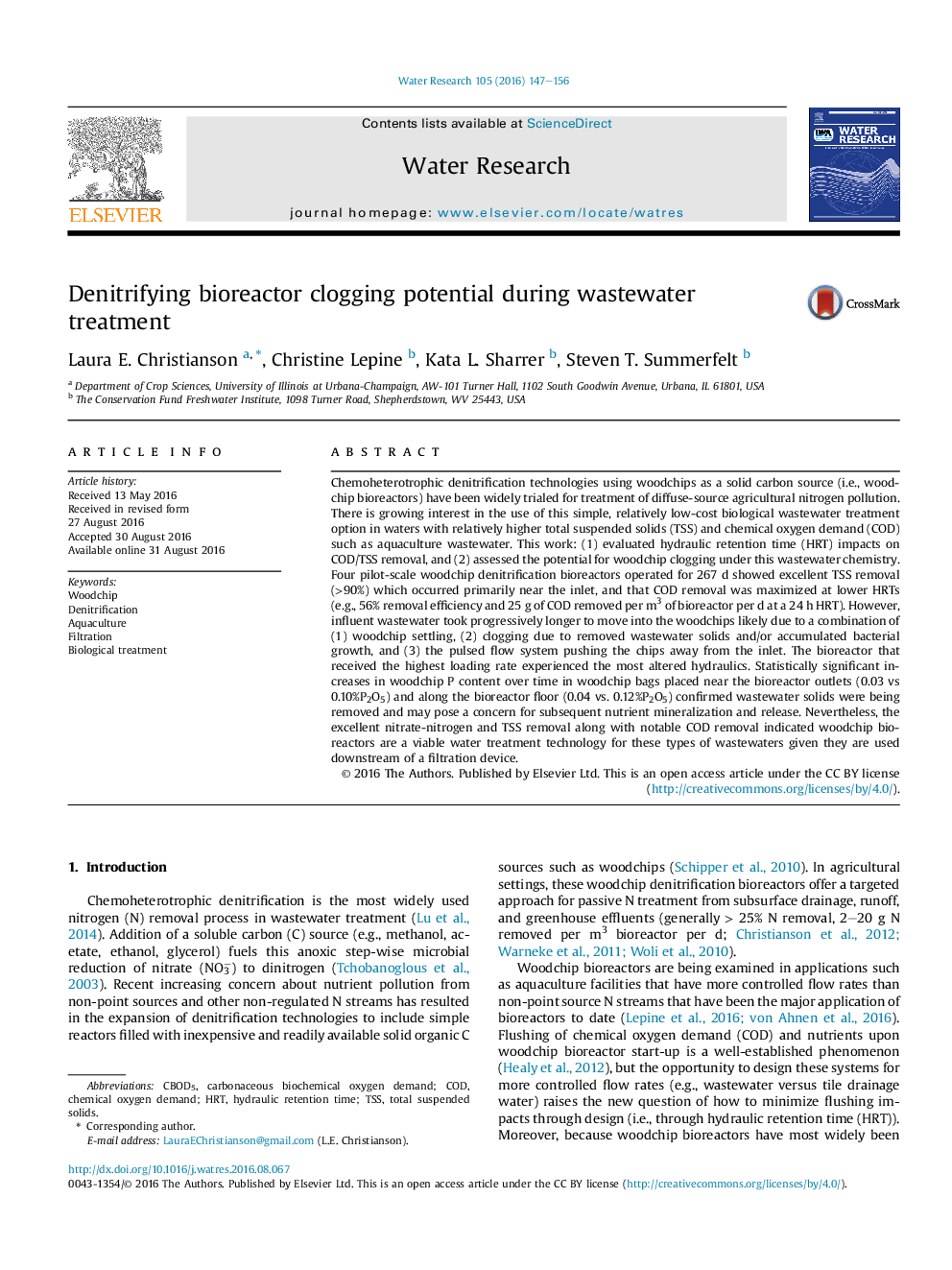| کد مقاله | کد نشریه | سال انتشار | مقاله انگلیسی | نسخه تمام متن |
|---|---|---|---|---|
| 6364564 | 1623063 | 2016 | 10 صفحه PDF | دانلود رایگان |
- Woodchip bioreactors removed wastewater TSS and COD, but hydraulics were altered.
- Wastewater took longer to move into the bioreactors over time.
- Designing for short HRTs optimized COD and TSS removal in this application.
- TSS removal was >90% and occurred primarily near the bioreactor inlet.
- Additional upstream filtration processes may help extend bioreactor life.
Chemoheterotrophic denitrification technologies using woodchips as a solid carbon source (i.e., woodchip bioreactors) have been widely trialed for treatment of diffuse-source agricultural nitrogen pollution. There is growing interest in the use of this simple, relatively low-cost biological wastewater treatment option in waters with relatively higher total suspended solids (TSS) and chemical oxygen demand (COD) such as aquaculture wastewater. This work: (1) evaluated hydraulic retention time (HRT) impacts on COD/TSS removal, and (2) assessed the potential for woodchip clogging under this wastewater chemistry. Four pilot-scale woodchip denitrification bioreactors operated for 267Â d showed excellent TSS removal (>90%) which occurred primarily near the inlet, and that COD removal was maximized at lower HRTs (e.g., 56% removal efficiency and 25Â g of COD removed per m3 of bioreactor per d at a 24Â h HRT). However, influent wastewater took progressively longer to move into the woodchips likely due to a combination of (1) woodchip settling, (2) clogging due to removed wastewater solids and/or accumulated bacterial growth, and (3) the pulsed flow system pushing the chips away from the inlet. The bioreactor that received the highest loading rate experienced the most altered hydraulics. Statistically significant increases in woodchip P content over time in woodchip bags placed near the bioreactor outlets (0.03 vs 0.10%P2O5) and along the bioreactor floor (0.04 vs. 0.12%P2O5) confirmed wastewater solids were being removed and may pose a concern for subsequent nutrient mineralization and release. Nevertheless, the excellent nitrate-nitrogen and TSS removal along with notable COD removal indicated woodchip bioreactors are a viable water treatment technology for these types of wastewaters given they are used downstream of a filtration device.
272
Journal: Water Research - Volume 105, 15 November 2016, Pages 147-156
